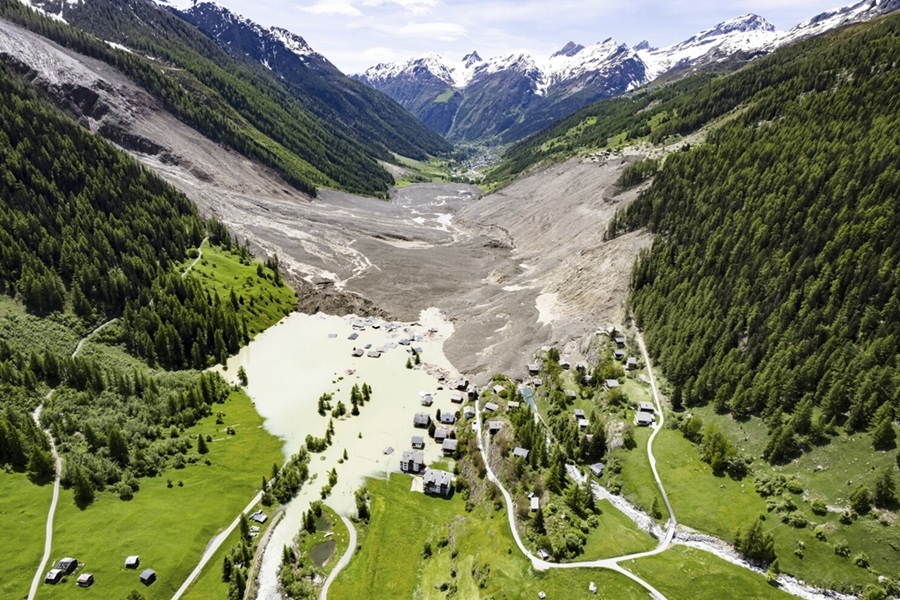On May 28, 2025, a catastrophic glacier collapse in the Swiss Alps led to a massive landslide that buried the majority of the Alpine village of Blatten in the Lötschental valley, canton of Valais. This natural disaster has raised significant concerns about the impacts of climate change on mountainous regions and the safety of alpine communities.
What Happened?
The disaster was triggered by the collapse of a section of the Birch Glacier, located near the Kleines Nesthorn peak. The glacier had been destabilized by a series of rockfalls in the preceding weeks, leading to increased movement and eventual failure. On May 28, approximately 3 million cubic meters of ice and rock cascaded down the mountainside, generating seismic activity equivalent to a magnitude 3.1 earthquake. The landslide buried an area about 2 kilometers long and up to 200 meters wide, engulfing around 90% of Blatten, including 130 buildings and the village church.
Casualties and Evacuations
Fortunately, due to early warning signs and proactive measures, the entire population of Blatten, approximately 300 residents, had been evacuated by May 19, nine days before the collapse. This preemptive action likely saved many lives. However, one 64-year-old man remains missing, and search efforts have been suspended due to hazardous conditions.
Environmental Impact and Ongoing Risks
The landslide also blocked the Lonza River, creating a natural dam and forming a new lake behind the debris. This has raised concerns about potential flooding in downstream villages such as Wiler and Kippel. Authorities have conducted partial evacuations in these areas and are closely monitoring the situation. The Swiss army has been mobilized to assist with emergency response and to mitigate further risks.
Government Response
Swiss President Karin Keller-Sutter visited the affected area on May 30, pledging federal support for the victims and the reconstruction of Blatten. The government is assessing the damage, which is estimated to cost hundreds of millions of Swiss francs, and is coordinating with local authorities to provide aid and resources for recovery efforts.
Travel Advisory
Travelers planning to visit the Valais region should be aware of the following:
Access Restrictions: Blatten and surrounding areas are currently inaccessible due to safety concerns.
Alternative Destinations: Consider visiting other parts of Switzerland that are unaffected by the disaster.
Stay Informed: Regularly check updates from the Swiss Federal Office for Civil Protection and local news outlets for the latest information on travel advisories and safety measures.
Climate Change and Glacial Stability
This event underscores the growing risks associated with climate change, particularly in alpine regions. Experts have noted that rising temperatures are accelerating glacial melt and destabilizing permafrost, increasing the likelihood of such catastrophic events. Switzerland has experienced significant glacier volume loss in recent years, with a 6% reduction in 2022 and a 4% reduction in 2023 .
Conclusion
The collapse of the Birch Glacier and the subsequent destruction of Blatten serve as a stark reminder of the fragility of mountain ecosystems in the face of climate change. While the immediate focus is on rescue and recovery, this disaster also highlights the need for long-term strategies to monitor glacial stability and protect vulnerable communities.
Travelers are encouraged to stay informed about the conditions in alpine regions and to support sustainable tourism practices that contribute to the preservation of these unique environments.
